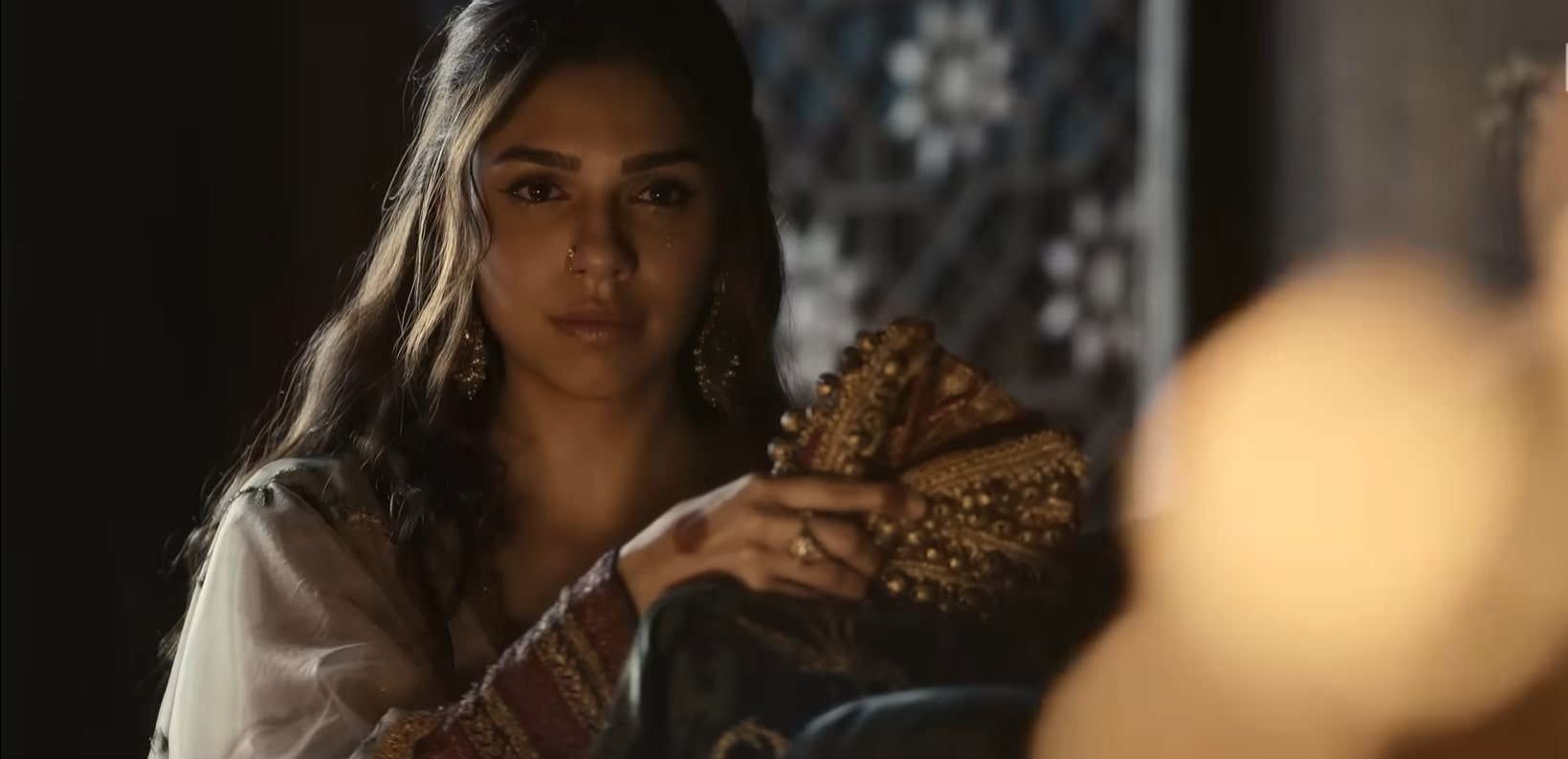‘Heeramandi: The Diamond Bazaar’ transports us to a pre-independence India where affluent tawaif, wealthy nawabs, freedom fighters, and the British are embroiled in a complex power struggle. The narrative revolves around the rivalry between the egoistic, self-proclaimed queen of Heeramandi, Mallikajaan, and the cunning challenger to her throne, Fareedan. A romantic subplot begins between Mallikajaan’s daughter, Alam, and Tajdar, the patriotic son of a Nawab. Alam is averse to joining her mother and sister in living life as a tawaif, instead wanting to pursue her passion for poetry. Tajdar is a progressive thinker who finds the practices of Heeramandi distasteful against women and is reluctant to join his father’s business as a servant to the British empire.
Created by Sanjay Leela Bhansali, the Netflix period drama traces their romance as it endures the class divide, the deceitful games of Fareedan, and the dangers of Tajdar’s revolutionary involvement in the freedom struggle. While Alam remains committed to supporting Tajdar in his ambitions of seeing an independent India, her fate remains unclear by the end of the show. SPOILERS AHEAD
Alam Risks Being Executed by the British Authorities
When Alam discovers that Tajdar has died in police custody at the hands of Superintendent Cartwright, she goes into a sorrowful depression, staying in bed for most days. Soon afterward, her elder sister, Bibbojaan, assassinates General Henderson and is sentenced to death as a result. As the entirety of Heeramandi gears up to violate the curfew and support Bibbojaan in her final hour, Alam is reinvigorated when a path to revenge presents itself.

With Heeramandi closed, Cartwright desires private entertainment at his residence. Ustadji offers Alam the chance to enter his residence as a courtesan and exact her vengeance. Hiding a pistol in her garments, Alam enters Cartwright’s house, and just as he gets close to her, she shoots him. As he lies on the floor, Alam shoots him a few more times for good measure, taking revenge not just for her deceased lover but also for the humiliation of her mother.
As the show ends at this point we can speculate a few possibilities for Alam’s future, most are grim but there is one optimistic scenario. As per the logical flow of the Netflix series itself, Alam should be treated very similarly to Bibbojaan once she is inevitably caught for the assassination. Bibbojaan shot a high-ranking British officer and was summarily sentenced to death by firing squad without a court trial. Thus, the show’s own precedent dictates that Alam, who also fatally shot a British officer, would face a similar fate. However, similar historical events of assassination in British-ruled India play out with a few key variations.
The most famous historical event in this regard is that of Bhagat Singh and his fellow freedom fighters assassinating British police officer John Saunders. They shot Saunders as he was leaving the District Police Headquarters in Lahore, mistaking him for James Scott, who they held accountable for the death of senior freedom fighter Lala Lajpat Rai. Bhagat Singh escaped after the shooting and later allowed himself to be captured in the Delhi Assembly bombing. He was initially sentenced to life imprisonment, and when his involvement in John Saunders’ assassination was proved, Bhagat Singh was sentenced to death by hanging. This process began in April 1929, and the judgment was passed after several hearings and the investigations of a special tribunal in October 1930.

Thus, for Alam, there would be court proceedings ascertaining her guilt, with a skilled lawyer possibly extending the case’s duration with various arguments of self-defense against predatory behavior. The extension of the case’s duration may come into play as the show reaches 1946 at this point in the story, as General Henderson speaks of the fall of Hitler before he is shot by Bibbojaan. If her trial extends past August 1947, Alam will then be a citizen of independent India and hailed as a freedom fighter who carried out a gruesome deed for the sake of her family and the honor of her country. Historically, any freedom fighters in jail were released after independence.
An important detail to note here is that India’s freedom movement was largely non-violent, and the majority of freedom fighters, especially in the 1940s, were arrested for their peaceful protests and released in a few months. The few radical revolutionaries who caused a loss of life were sentenced to death by hanging after a swift court case. Alam may be sentenced to death before 1947, but it would be historically inaccurate for her to face a firing squad as done by her sister, Bibbojaan.
While it may have been used in the show for dramatic effect, the British administration did not use a firing squad to deliver a death sentence. This is a method that was employed at the time by the Soviet Union under Joseph Stalin, by China, and by the British army in certain cases. Therefore, Alam may find herself sentenced to death by hanging if proven guilty, life imprisonment if the details of the incident remain murky, or set free if her case drags on till August of 1947.
Read More: Heeramandi: Do Alamzeb and Tajdar End Up Together?


You must be logged in to post a comment.